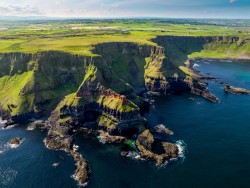Mountains come in all shapes, sizes, heights, and types. Some of these geological formations hold religious significance, opportunities for geological research, or places of pilgrimage for travelers and climbers. With their changing weather and defining landscapes, these skyscraping peaks alter our perspective.

Uluru is a tor, an isolated mass of weathered rock, and is the second largest monolith in the world after Mount Augustus in Australia.

Due to rockslide and subsequent erosion, the height of Mount Cook slowly decreases.

Grand Teton National Park offers opportunities for fishing, hiking, camping, and mountaineering not far from Yellowstone National Park.

Divided into four summits, Annapurna in Nepal is considered a massif, or a group of compacted mountains.

Cotopaxi erupted more than 60 times since the 16th century, making it one of the most active volcanoes in Ecuador.

Once an active volcano, Ben Nevis exploded and collapsed inward on itself millions of years ago.

Surrounded by beaches, Iceland's Kirkjufell (or “church mountain") holds bird and fish fossils.

In 79 C.E., Mount Vesuvius erupted and buried the city of Pompeii under ash.

A UNESCO World Heritage site, the Pitons hold the water source for the hot springs of Absalon in Saint Lucia.

Popocatépetl is an active stratovolcano located in the Trans-Mexican volcano belt.

The stunning pyramidal peak of Alpamayo rises among several tropical-zone glaciers in the Cordillera Blanc mountain range of Peru.

This granite monolith in California features almost vertical walls and stands over 3,000 feet above sea level.

The pyramid-shaped Matterhorn straddles the border of Switzerland and Italy in the Alps.

An active volcano that last erupted in the 18th century, Japan's Mount Fuji has been a pilgrimage site for centuries.
 5 Hidden Gems in Ireland that Most Tourists Miss
5 Hidden Gems in Ireland that Most Tourists MissA trip across the pond to Ireland is a dream come true ...